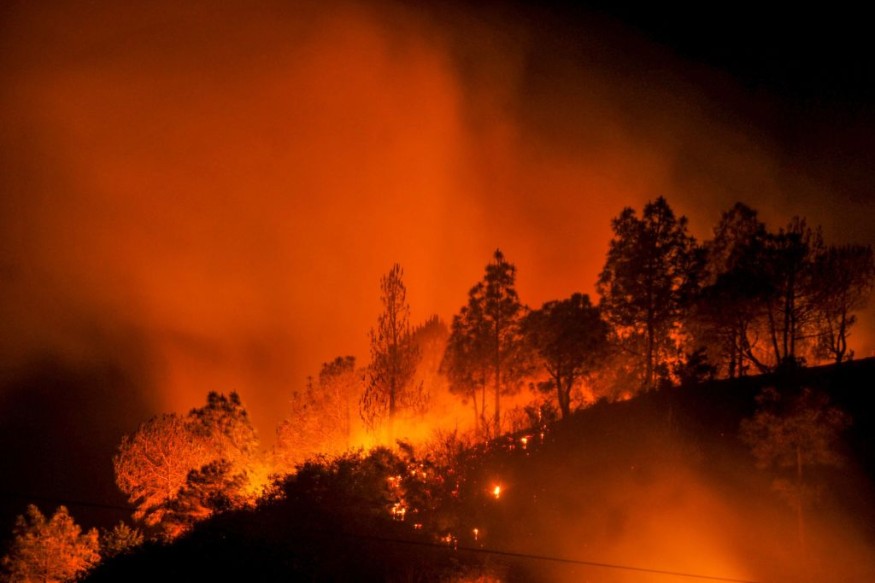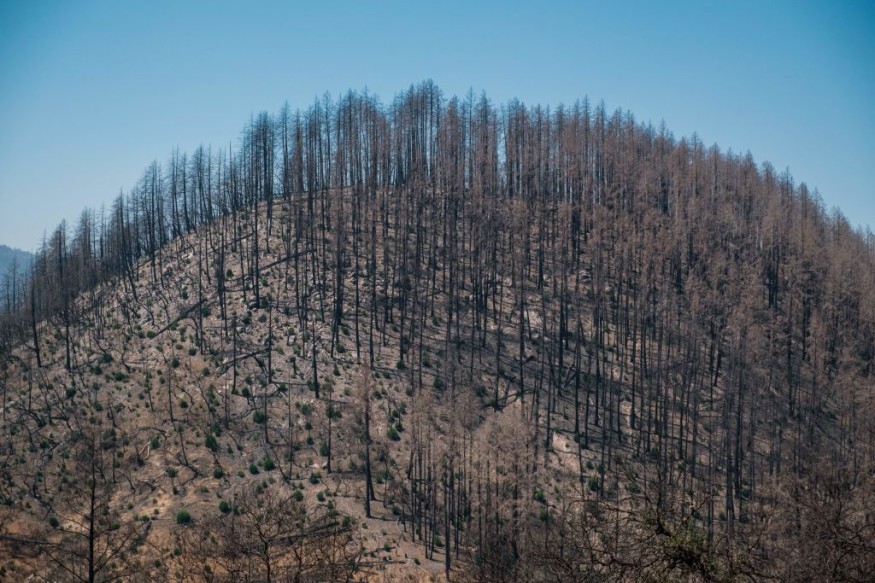As howling winds continued to drive the erratic flames forward, a vast New Mexico wildfire was headed toward a ski resort and the 1,000-year-old hamlet of Taos.
Warning

Officials warned additional residents to prepare to flee as the fast-moving fire gained speed. Flames rushed across parched woods as people ran, and firefighters battled a blaze that has burnt a 45-mile-long route up the Sangre de Cristo mountains in little over a month.
After being instructed to be ready to leave, families in Taos Canyon and the Angel Fire ski resort loaded their possessions into vehicles and trailers.
"With the models, we're running, there's a chance those places may see fire," Todd Abel, a battalion chief with the National Wildfire Coordinating Group, said during a briefing.
Meanwhile, in southern California, a wildfire that started Wednesday afternoon rushed through multimillion-dollar houses on coastal bluffs, destroying at least 20 homes, according to fire officials. Gusty ocean breezes fuelled the flames, but they dwindled by Wednesday night. There were no injuries recorded.
The fire burned for around 200 acres (81 hectares) near Laguna Niguel. Still, the wind blew embers into palm trees and dense, dry scrub on hillsides and steep canyons that hadn't burned in decades, according to Brian Fennessy, Orange County Fire Authority chief.
Climate Change

Climate change, according to Fennessy, has rendered even little fires that were formerly readily managed significant risks to life and property throughout the west.
New Mexico's governor warned on Tuesday that the possibility of greater devastation is high. The long-term expenses of putting out the massive fire, which is presently the country's biggest, will be enormous.
Strong winds and dangerously dry conditions are forecasted for two more days before some reprieve arrives on Friday.
On Tuesday night, crews were particularly concerned about the possibility of the massive fire east of Santa Fe spreading farther north, closer to Taos - approximately 20 miles (32 kilometers) beyond its current northern limit.
The main roadway north from Holman to Taos has been blocked, and further settlements have been placed on evacuation notice.
"It's quite busy." Fire spokesperson Todd Abel cautioned, "This is a significant push, a lot of intensity right now."
During a press conference earlier on Tuesday, Governor Michelle Lujan Grisham said she had not heard any reports of extensive home damage in recent days, despite the current wave of severe winds that fueled the wildfire and had firefighting troops work harder.
Bulldozing firebreaks, installing sprinklers, cutting trees, and raking pine needles have all been used to route flames around dwellings in multiple tiny communities on the northern and southern edges of the fire. The fire is being fought by approximately 1,800 firefighters and support people, including specially trained teams.
Firefighting Efforts
Fighting the wildfire and another minor fire near Los Alamos National Laboratory has cost more than $65 million.
With wind anticipated until Wednesday, the cost of rebuilding dwellings, preventing post-fire floods, and restoring the forest scorched by the bigger fire when it is out is projected to exceed billions of dollars, according to Lujan Grisham.
"Rebuilding neighborhoods is not an overnight process," Lujan Grisham explained. "As a result, we should be thinking in terms of enormous resources, which, in my opinion, should be borne primarily by the federal government given the scenario."
Since last month, the wildfire has destroyed over 300 structures, including homes. Although some communities remain under evacuation orders, officials began allowing people on the fire's eastern edge to come home on Monday.
The incident, partially the consequence of a preventative fire lit in early April that escaped containment, has already been labeled a federal disaster. A few weeks later, the flames joined with another fire, and the jagged perimeter had grown to more than 370 square miles as of Wednesday (236,939 acres).
At Mora and Holman, where Highway 518 north to Taos was blocked, structure protection was prioritized. Authorities emphasized that there was no imminent threat to Taos's areas, but additional evacuation advisories were issued as far north as the Angel Fire ski resort east of Taos.
"With the models, we're running, there's a chance those places may see fire coming up into Taos, Black Lake, and Angel Fire," Abel, an operations chief on the fire in the Santa Fe national forest, said during a briefing on Tuesday evening.
The governor stated that anyone who does not feel the federal government should assume considerable culpability would be challenged. "Considering a planned burn during the windy season in a state under an urgent drought alert is irresponsible," she added.
Members have requested a probe of New Mexico's congressional delegation and others. While forest authorities have yet to reveal planning paperwork for the controlled fire, they have stated that weather forecasts are within project limitations.
Environmental Issues
Meanwhile, a minor fire in the Jemez Mountains led authorities at the Los Alamos National Laboratory, which conducts nuclear research, and the adjacent town of Los Alamos to prepare for evacuations.
On Tuesday, about 900 workers were battling the blaze, costing nearly $16 million. As the winds flared up on Tuesday afternoon, towering columns of smoke from both fires could be seen from miles away.
Wind and low humidity levels continue to be major wildfire risks in the western United States. The National Weather Service issued red flag warnings for severe fire danger in regions of New Mexico, Nevada, Arizona, Colorado, and Texas.
According to forecasters, New Mexico is exceeding most other previous years in terms of the number of red flag days in April and so far this month. Smaller flames were also being fought in New Mexico and Arizona.
For more news about the environment , don't forget to follow Nature World News!
© 2025 NatureWorldNews.com All rights reserved. Do not reproduce without permission.





